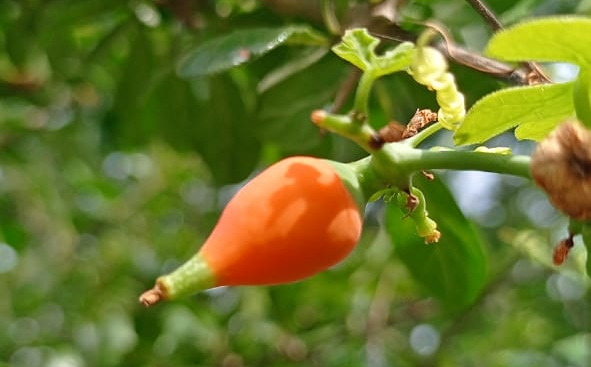Corallocarpus epigaeus
- Das K

- Nov 5
- 3 min read
Updated: Nov 6
(Iron Root)
1. Taxonomic insights
Species: Corallocarpus epigaeus
Family: Cucurbitaceae
Genus: Corallocarpus
Related Herbs from the same family:Trichosanthes dioica (Pointed Gourd, Parwal) - A common vegetable used in Ayurveda for its digestive, blood-purifying, and cardiotonic properties. Native to the Indian subcontinent.Momordica charantia (Bitter Gourd, Karela) - Widely used for its potent antidiabetic, anthelmintic, and blood-purifying effects. Pan-Indian.Coccinia grandis (Ivy Gourd, Kundru) - Used as a vegetable and in traditional medicine for diabetes, skin diseases, and as a cooling agent. Widespread in India.
2. Common Names:Scientific Name: Corallocarpus epigaeus | English: Iron Root | Sanskrit: Kanda, Kalinga, Nakuli | Hindi: Kandan, Mirchya, Jangli Kanda | Tamil: Kaatu peerkankai, Kattukovai | Telugu: Adavidoskaya, Nakka Kaya | Kannada: Kaadu Sorekai, Kandan | Malayalam: Kattukovakka, Kandan | Bengali: Kanda, Ban Kankur | Nepali: | Urdu: | French: | Spanish: | Italian: | German: | Chinese: | Russian: | Japanese: | Afrikaans: |
3. Medicinal UsesAnti-inflammatory, Analgesic (pain-relieving), Antirheumatic, Antipyretic (fever-reducing), Anthelmintic (expels worms), Blood Purifier, Antidiabetic, Aphrodisiac.
4. Phytochemicals specific to the plant and their action.
Cucurbitacins: Bitter triterpenoid compounds characteristic of the Cucurbitaceae family. They are responsible for the plant's strong Anti-inflammatory, Analgesic, and Antipyretic properties. They also exhibit Anthelmintic activity.
Flavonoids & Phenolic Acids: These compounds contribute significant Antioxidant activity, which supports the plant's role as a blood purifier and helps in managing inflammation and diabetes.
Tannins: Provide astringent properties and may contribute to wound healing and antimicrobial actions.
Alkaloids: Present in the tuber, they may contribute to the overall bioactivity, including potential analgesic effects.
5. Traditional and Ethnobotanical uses covering the Medicinal uses.
Anti-inflammatory & Analgesic (For Rheumatism and Joint Pain)
Formulation: Tuber paste or poultice.
Preparation & Use: The tuber is crushed and made into a paste, which is applied externally over inflamed joints, swellings, and painful areas caused by arthritis, sciatica, and gout.
Reasoning: The potent cucurbitacins are known for their strong anti-inflammatory and analgesic effects, working by inhibiting inflammatory enzymes like cyclooxygenase (COX).
Antipyretic (For Fevers)
Formulation: Tuber decoction.
Preparation & Use: A decoction of the tuber is administered internally to treat intermittent fevers and chronic fevers.
Reasoning: The anti-inflammatory and antioxidant properties help reset the body's thermostat in the hypothalamus, reducing fever.
Anthelmintic (For Intestinal Worms)
Formulation: Tuber powder or juice.
Preparation & Use: The juice of the fresh tuber or its dried powder is mixed with water and taken on an empty stomach to expel intestinal worms.
Reasoning: The bitter principles, particularly cucurbitacins, are toxic to intestinal parasites, paralyzing or killing them.
Blood Purifier & Skin Diseases
Formulation: Tuber decoction.
Preparation & Use: A regular course of the tuber decoction is given for skin conditions like boils, eczema, and leprosy, based on the concept of purifying the blood.
Reasoning: The antioxidant and anti-inflammatory compounds help neutralize toxins and reduce systemic inflammation, which manifests as skin diseases.
6. Culinary uses- Decoction, teas, juices and Healing recipes.
The tuber is not a culinary item due to its intense bitterness. It is used exclusively as medicine, primarily in decoctions and pastes.
Anti-arthritic Tuber Poultice
Purpose: To reduce joint pain and inflammation.
Preparation & Use:
Take a small piece of the fresh Corallocarpus epigaeus tuber.
Grind it with a small amount of water to make a smooth paste.
Apply a thick layer to the affected joint.
Leave on for 30-45 minutes before washing off. Use once daily. (Perform a patch test first to check for skin sensitivity).
Antipyretic & Blood Purifying Decoction
Purpose: To reduce chronic fever and cleanse the blood.
Preparation & Use:
Take 3-5 grams of dried tuber pieces.
Boil in 1.5 cups of water until it reduces to 1 cup.
Strain and allow it to cool.
Take 1-2 tablespoons of this decoction twice a day for a short duration.
7. Disclaimer:The tuber of Corallocarpus epigaeus is very bitter and potent. Cucurbitacins can be toxic in high doses, causing severe gastrointestinal irritation. Self-medication is strongly discouraged. Consultation with an Ayurvedic practitioner is essential to determine the correct dosage and preparation. It should not be used during pregnancy or by individuals with sensitive stomachs.
-x-x
8. Reference Books, Books for In-depth Study:
Database on Medicinal Plants Used in Ayurveda (Volumes 1-9) by CCRAS
Medicinal Plants of India with Special Reference to Ayurveda by N.P. Sahu
Pharmacographia Indica by William Dymock, et al.
9. Further study:Citrullus colocynthis (Indrayan, Bitter Apple). Scientific name: Citrullus colocynthis. Family: Cucurbitaceae. Shares the presence of potent cucurbitacins and is used for similar purposes like rheumatism, constipation, and as an anthelmintic, though it is much stronger and more toxic.
Mukia maderaspatana (Mukkai, Madras Pea Pumpkin). Scientific name: Mukia maderaspatana. Family: Cucurbitaceae. A common climber used in Siddha and Ayurveda for digestive issues, respiratory conditions, and fever, showing similar anti-inflammatory and antipyretic uses.
-x-x-x-End-x-x-x









Comments